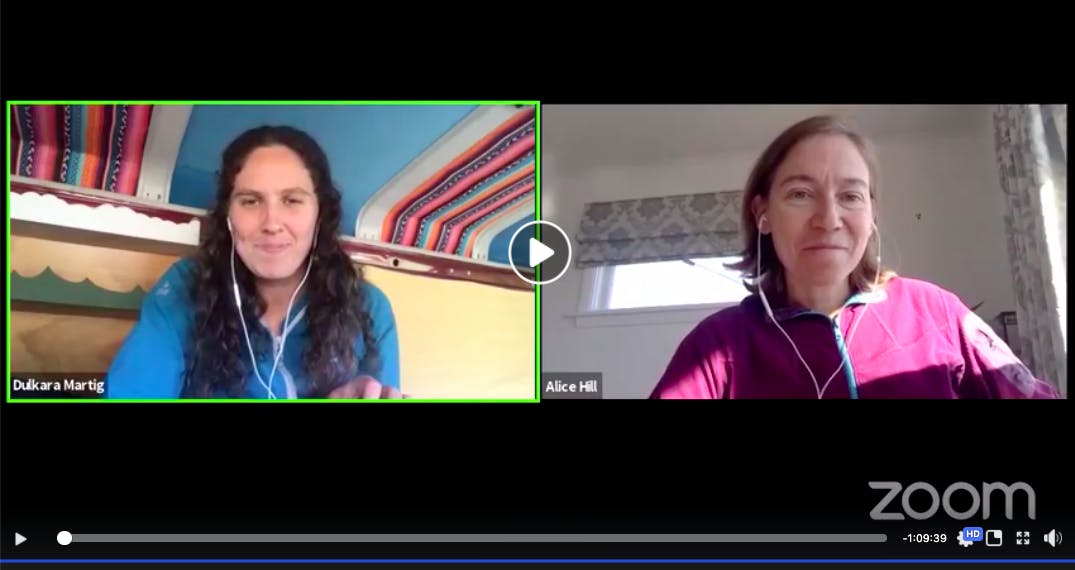Lituya Bay to Haines: Ski-Mountaineering and Packrafting
Lituya Bay to Haines
A ski-Mountaineering and packraft traverse in Southeast Alaska.
Photos by: Dulkara Martig and Christian Martin
A few years ago an email popped up in my inbox with ‘temptation awaits’ in the subject line. It was Friday afternoon, I was five days into a new job in a tech startup office in Christchurch. I gulped, closed my laptop, and went to make a cup of tea. A few weeks later I was touching down in Anchorage, Alaska, with two gigantic backpacks.
Christian, Alice, Bruno and I got dropped off by bush plane on a remote stretch of coastline near Lituya Bay, in South East Alaska. Our fifth expedition member, Brett, was to join us a few days in. Next to us we spotted the largest grizzly prints we’d ever come across. And a few metres away wolverine and wolf prints weaved across the sand. On the first night of our trip we went to sleep to the sound of waves rolling onto the shore, sleeping right next to a grizzly highway. We had three weeks and a goal to make it back to Haines, on skis and by packraft, climbing Mount Fairweather en route. It was just a few hundred miles, negotiating five glaciers and paddling down a river to finish.
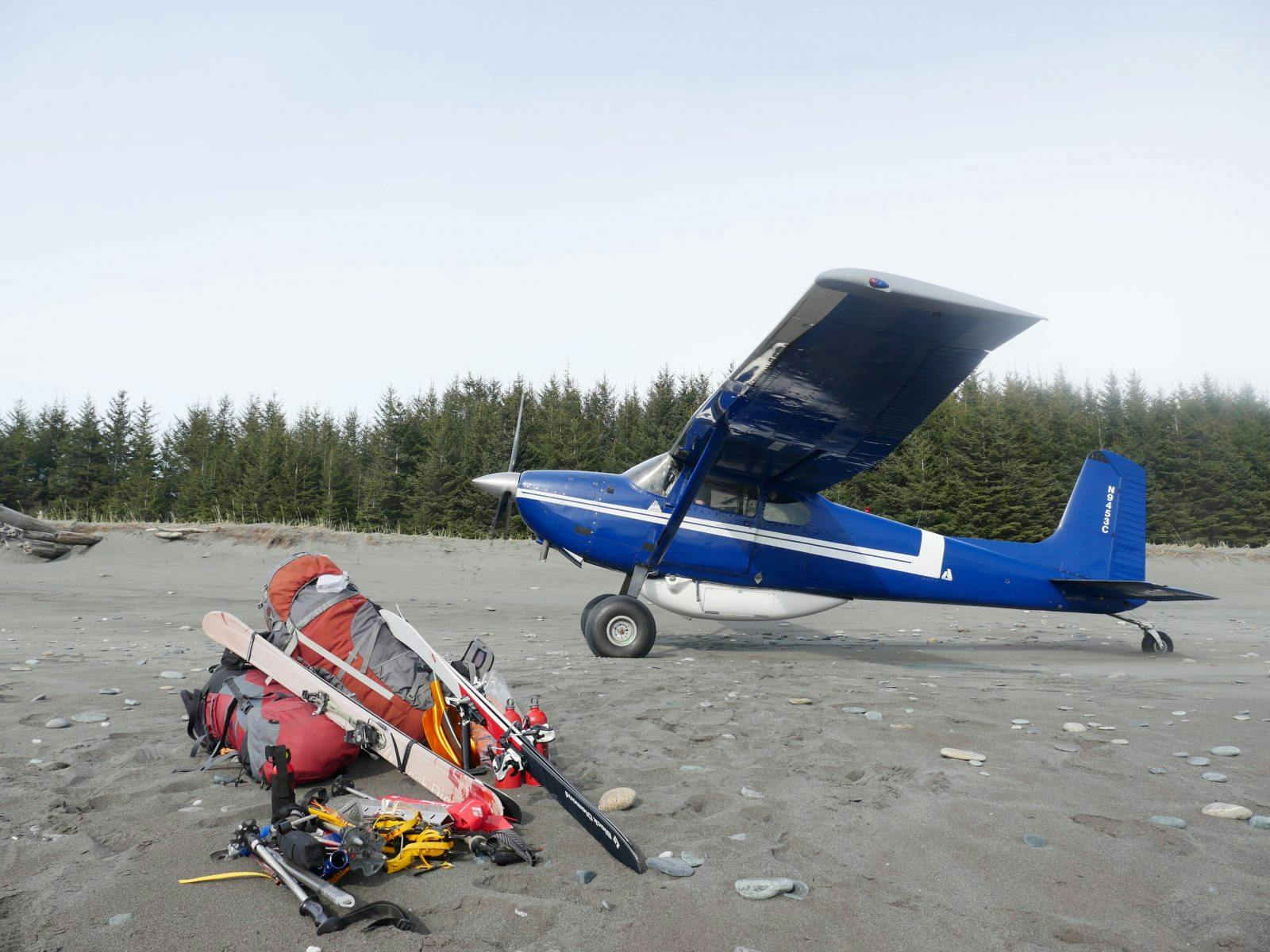

We put on our ski boots and started walking across the sand. Mount Fairweather was a white giant towering above everything else. Queen of the coast. We opted for travel on gravel bars, but every time the river cut us off we were forced into the forest of tall trees rising above prickly thickets. We were constantly doing the limbo. Our skis got caught on everything and our boots felt awkward. We were in Desolation Valley. On our first afternoon we hit a tall wall of ice and climbed a loose moraine slope to reach the top. A few hours later we were still in thick bush, post-holing through moss and dodging crevasses in the forest. We camped on a bed of moss growing on ice. There wasn’t a drop of water around. We melted snow for cooking surrounded by every shade of green you could imagine.
Twisting and turning, tossing our skis ahead into the dense, prickly thickets, we’d often take two steps forward to be flung three steps back. “Christian said.“F*% box 26,” Bruno grunted. Laughter and cries of frustration rang through the air as we forced our way through a thick patch of forest, the ground at our feet covered in awkward loose boulders and moraine. We slipped, slid and stumbled all over the place. We finally collapsed in the one flat patch of snow we found in the forest and, for the second night in a row, melted snow in the forest for cooking, surrounded by moss.
The Grand Plateau Glacier seemed an impossible target but eventually snow patches became more frequent and the forest opened up. It began to snow lightly and visibility slipped away as we finally put on our skis and skinned up a steep snow slope towards the pass. Two wolves howled in the distance.
Three days after leaving the beach we were eating quesadillas and Mexican bean soup at our first real snow camp. The next morning we crawled out of our sleeping bags to greet a bluebird day, with views right across the Gulf of Alaska. We bathed in the sun eating hash browns for breakfast, unravelled our ropes, put on our harnesses and laid our skis on the ground. Shouts of glee echoed through the Fairweathers as we skied off the pass and onto the mighty Grand Plateau Glacier below. The horror of Desolation Valley was beginning to fade. “Box 26 was almost worth this,” I thought to myself.
We spent 3 hours of our second bluebird day probing and then stomping out a 800m snow runway so Brett could be flown in to join us, along with a huge pile of food. With deteriorating weather and limited time, we made the decision to let go of our summit bid and prioritise the traverse. said Bruno. We sang Happy Birthday to Bruno and sat around laughing, drinking backcountry lattes and munching on fried mozzarella sticks. We continued down the Grand Plateau Glacier with 20 days’ worth of food, packrafting gear and skis.
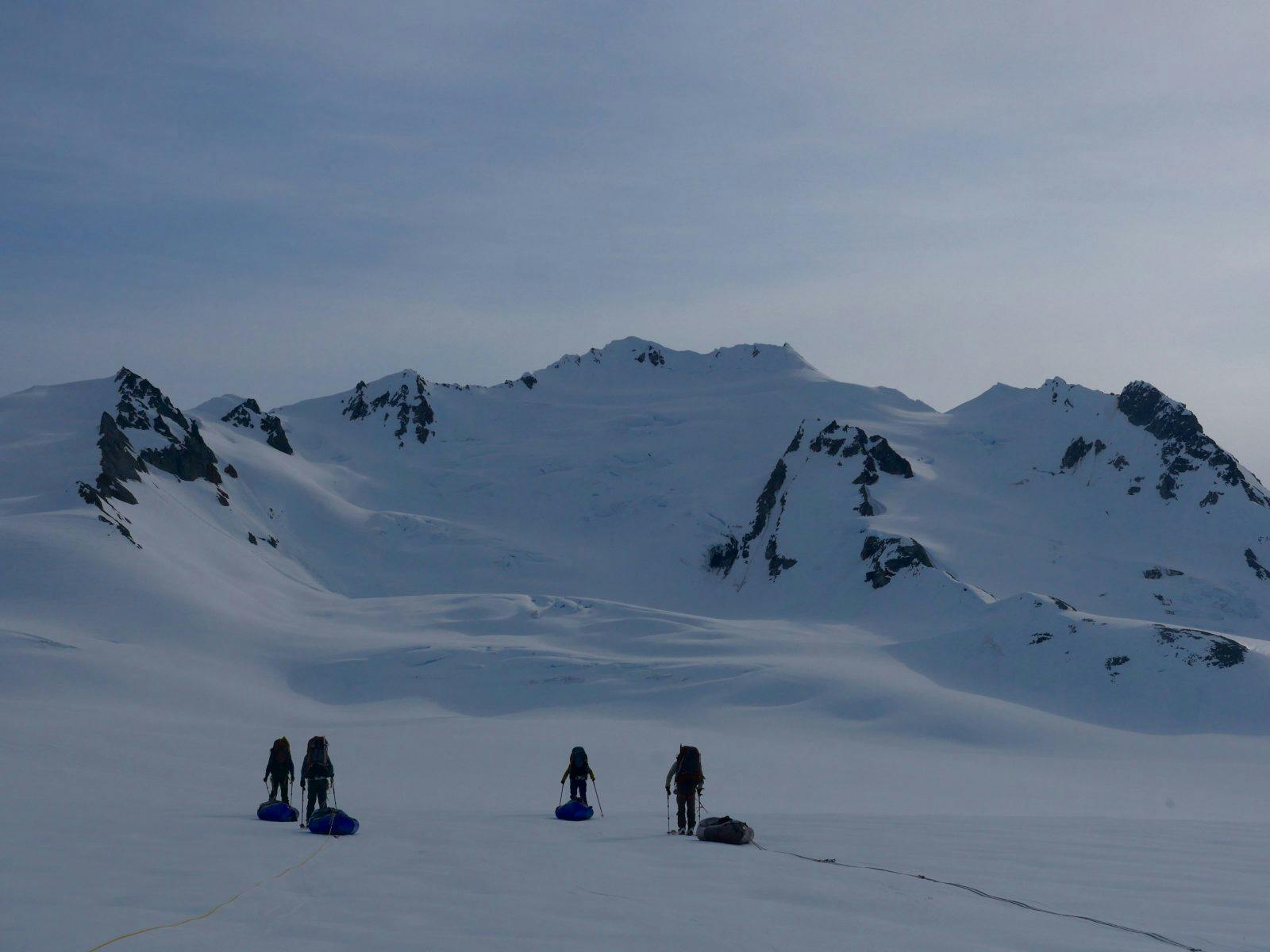
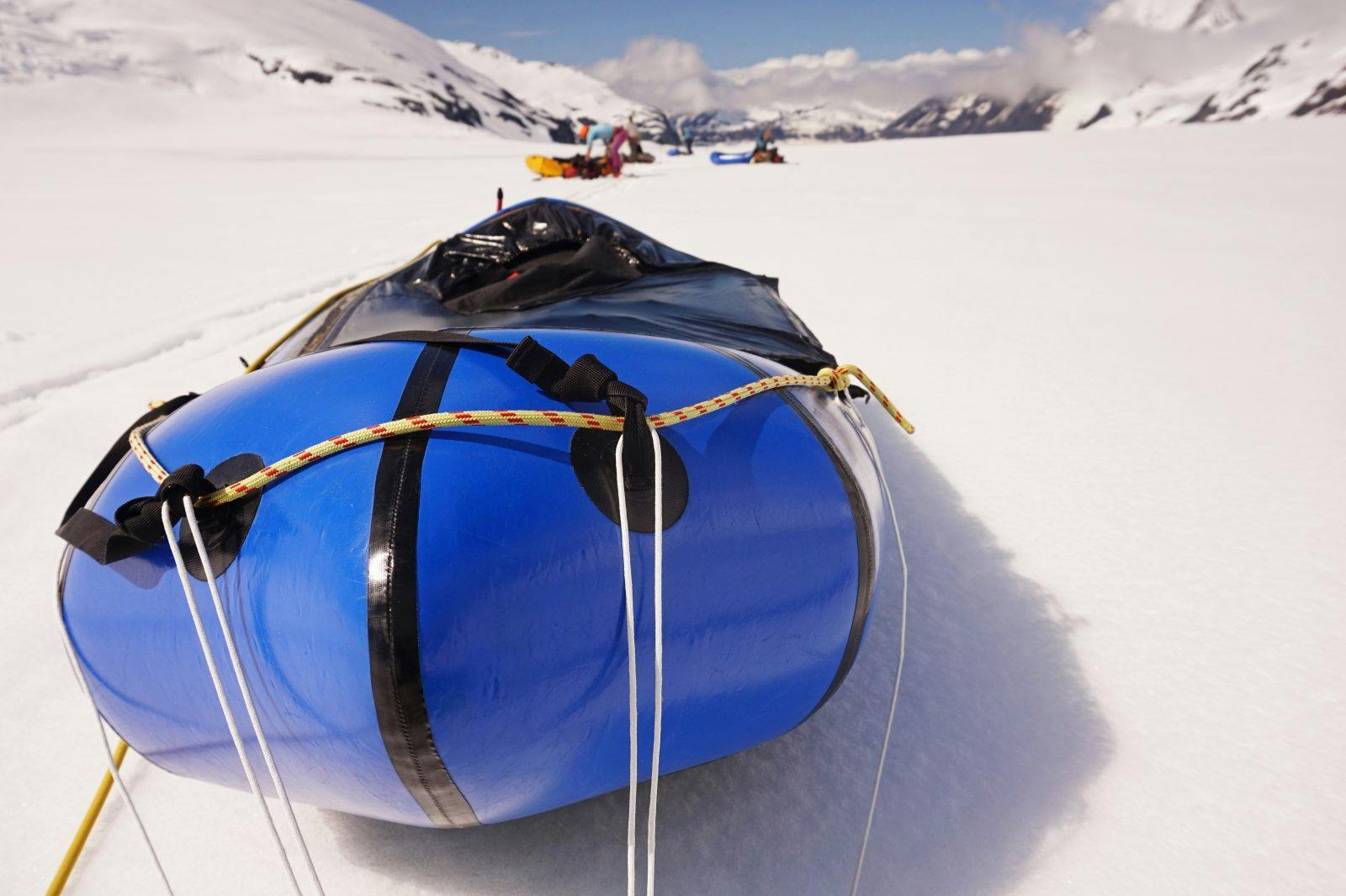

Sun turned to rain and we soon found ourselves navigating the firn line, with packrafts inflated. It wasn’t long until we hit bare ice. “There’s a river running through an ice canyon, we can’t find a way across. It looks really messy in there,” Brett said after a quick scout. Feeling exhausted, we set up camp on the bare ice, mentally preparing ourselves to scout a route through the next ice fall and shuttle our gear in two loads.
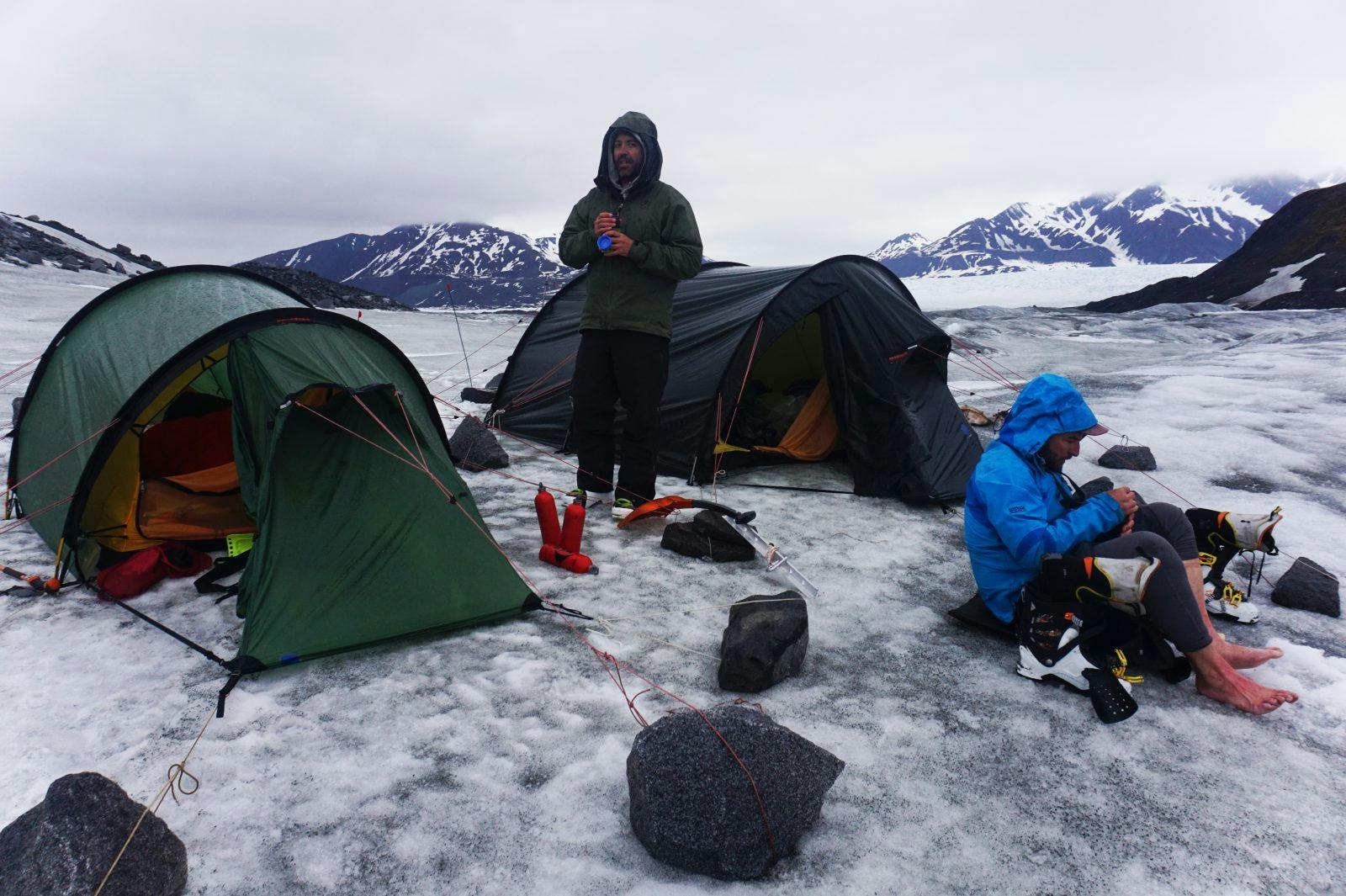

It took us an entire day, in low visibility, to shuttle our gear through the ice fall. Haines seemed impossibly distant and the weather was deteriorating. We found ourselves precariously shuttling our inflated packrafts across so they wouldn’t pull us into the cracks. We used an ice screw anchor and snow picket to belay people around the cracks. Piercing cold wild and rain drove into our faces for a few hours as we went through this process. I remember thinking, at one point, that it would be easier to just climb into a crevasse and curl up and go to sleep. We dropped a packraft down a crevasse and had to set up an ice screw anchor to retrieve it. It seemed strange seeing packrafts in this frozen, inhospitable land. With underwear and socks saturated, we continued pushing through. The thought of gaining elevation to have it snow rather than rain kept us trudging forwards. We finally made it through and skinned into a good compression zone with a rocky outcrop to provide our tents with some shelter from the wind.
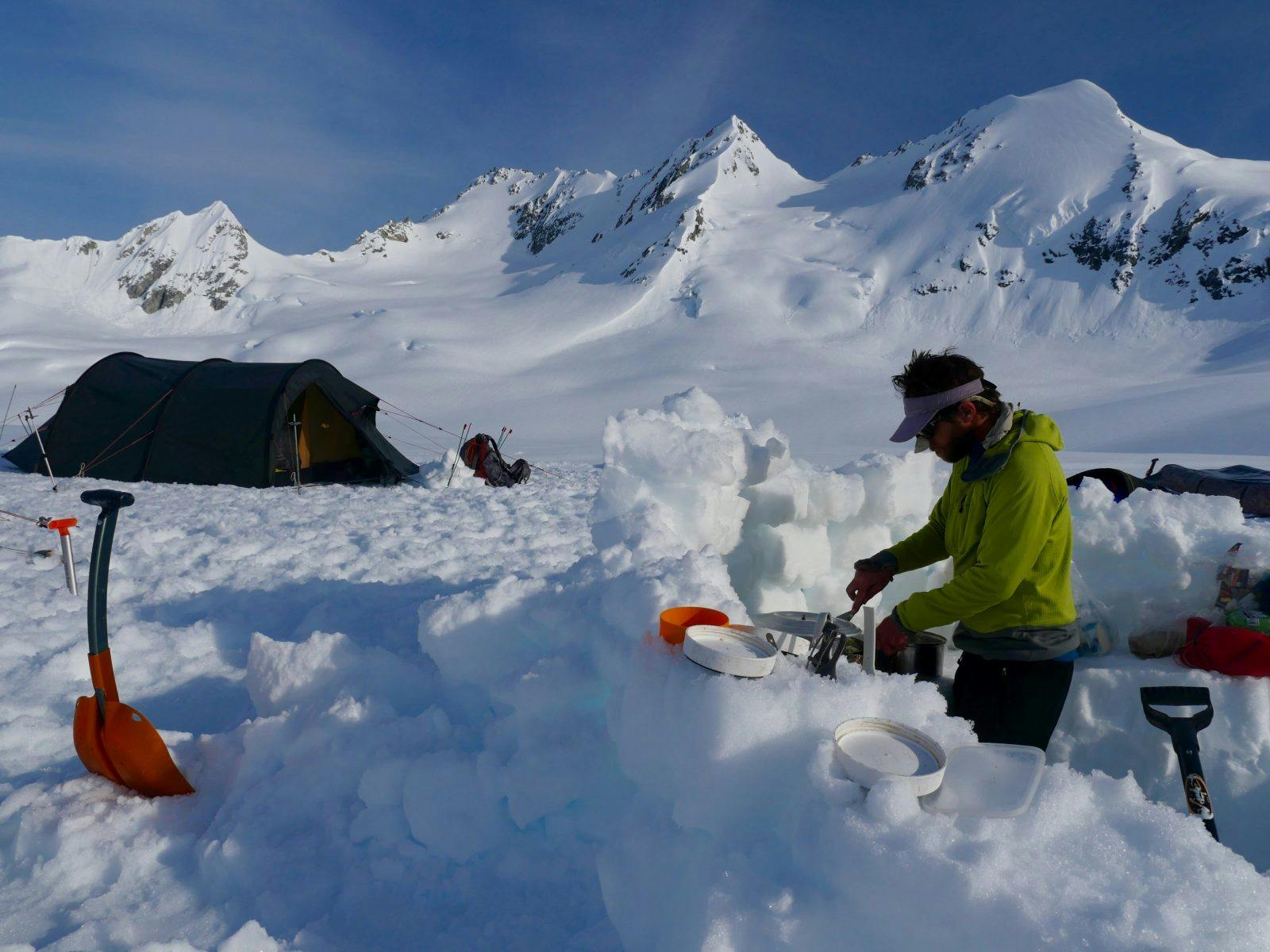
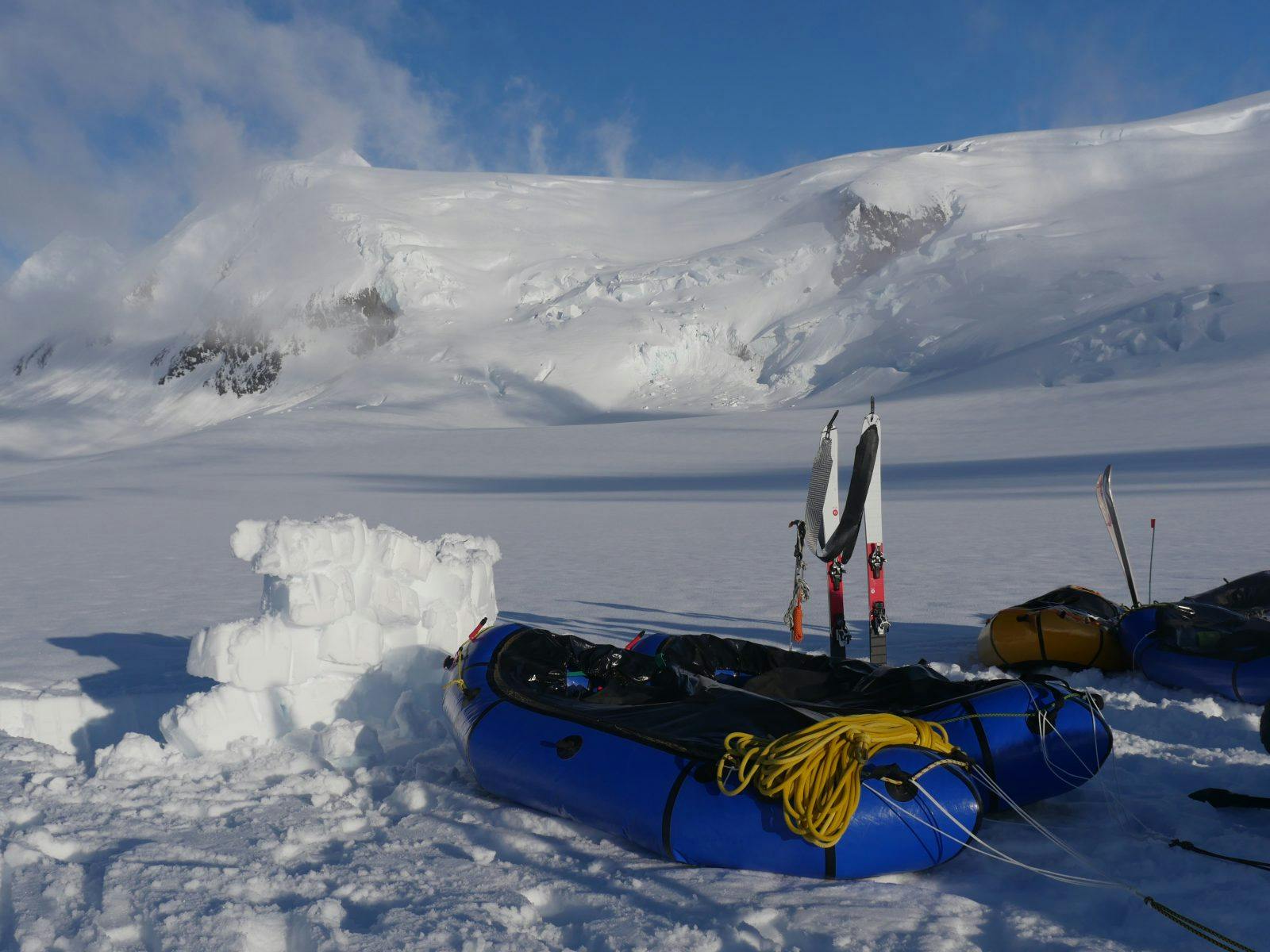
Food started warming our bodies, generating enough heat to start drying out our layers. We hunkered in style for the next 24 hours, with pizza, cheesy grits, backcountry lattes (a Bruno speciality) and Yahtzee.
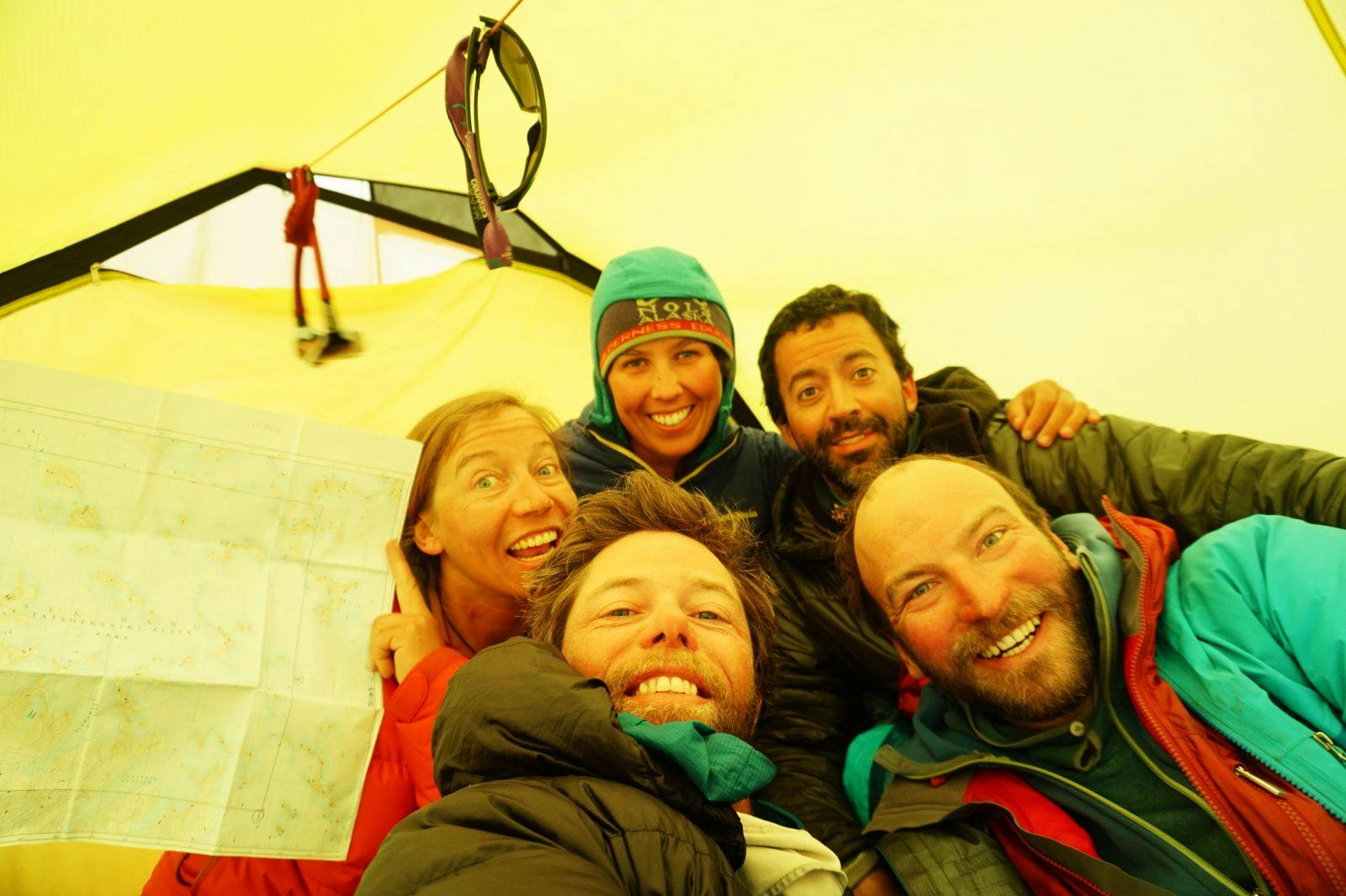
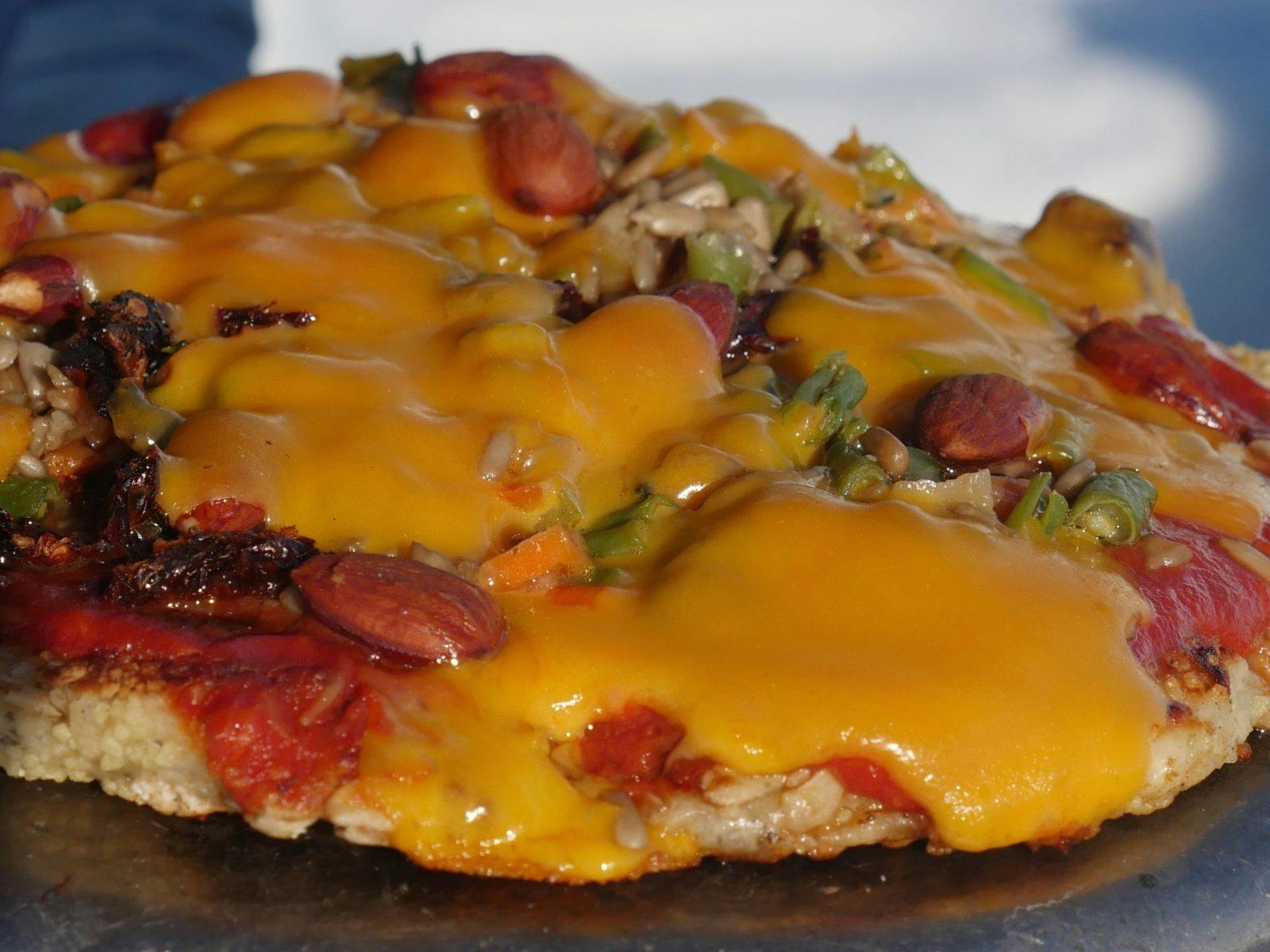
Waking up to clear skies and no wind, we all grinned as we skied across the border into Canada. Glacier life flew by, the days blurring. It’s a land of extremes. It was either freezing cold and super hard to get out of our sleeping bags or baking hot with no cover from the Death Star, sucking energy from us and making us all look haggard and raccoon-eyed. Fresh grizzly and wolverine prints criss-crossed the snow, reminding us that we, as humans, were merely passing through. A never-ending expanse of white giants stretched out to the horizon. We made moraine camps, snow camps and one magical camp with a patch of greenery, a worried Arctic ground squirrel and a few birds. We plodded on. The “Alaska factor” hit us hard many days, when you estimate your distance based on sight but it ends up being three times as far. The longest glacier in NZ is the Tasman, at around 20 km, whereas in Alaska it’s the Bering, over 200 km.
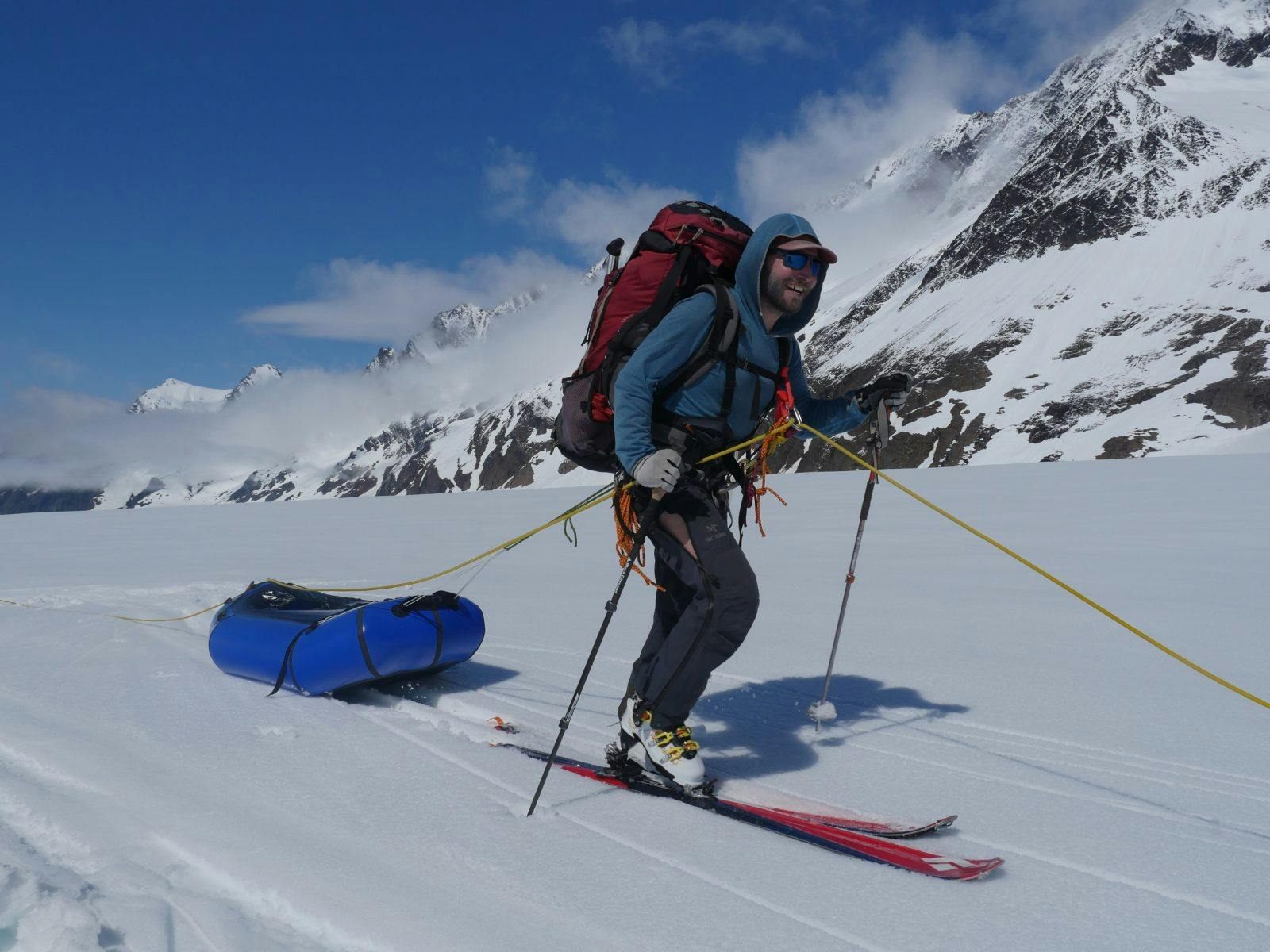
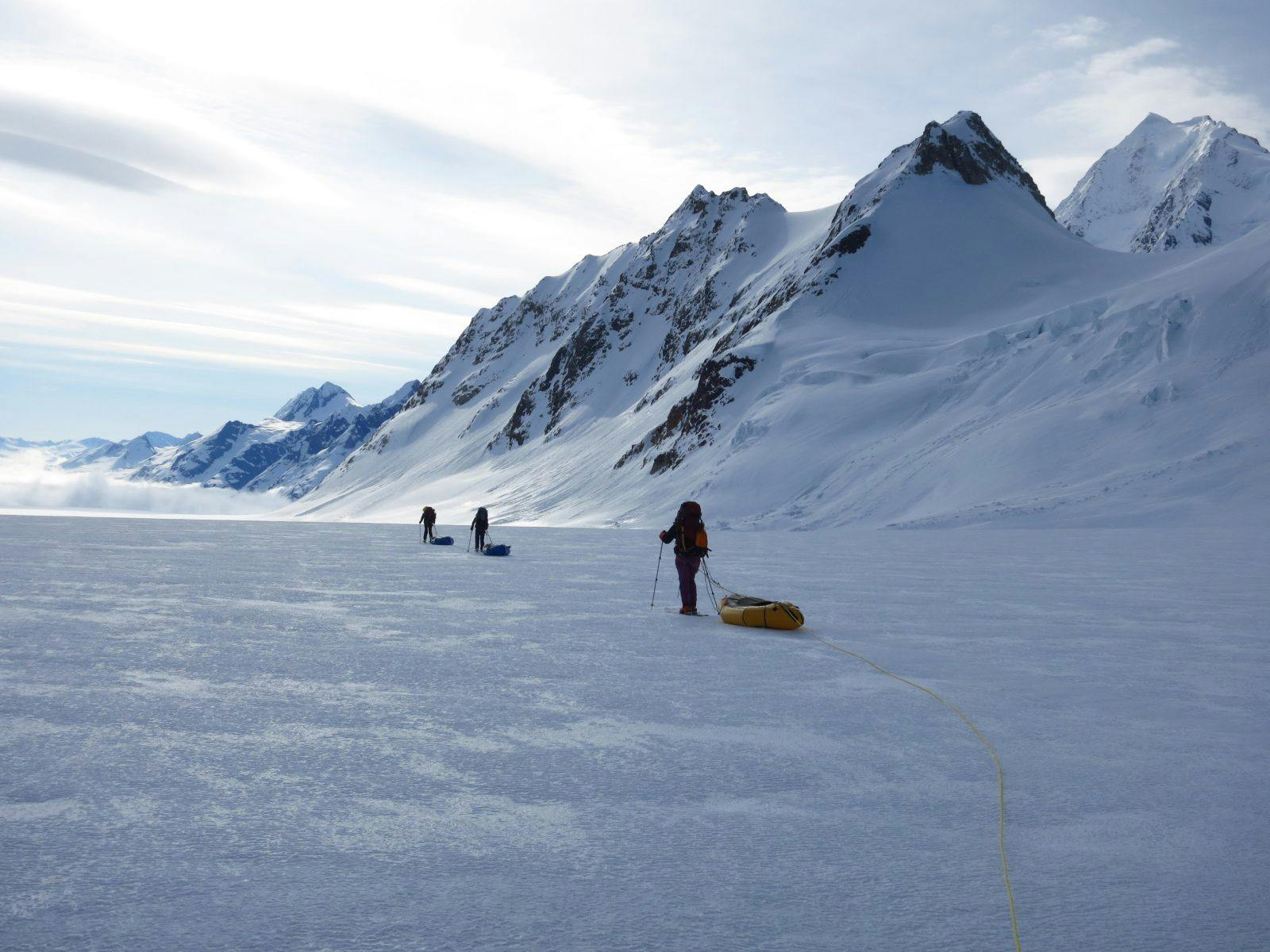
Towards the end of the trip we were going to bed hungry each night. “I Christian commented, as he spread SPF over his lips. After moving for seven consecutive days we hit the head of the Tsirku Glacier and set up camp 14 km from the toe. Floating downstream in packrafts was suddenly within reach.
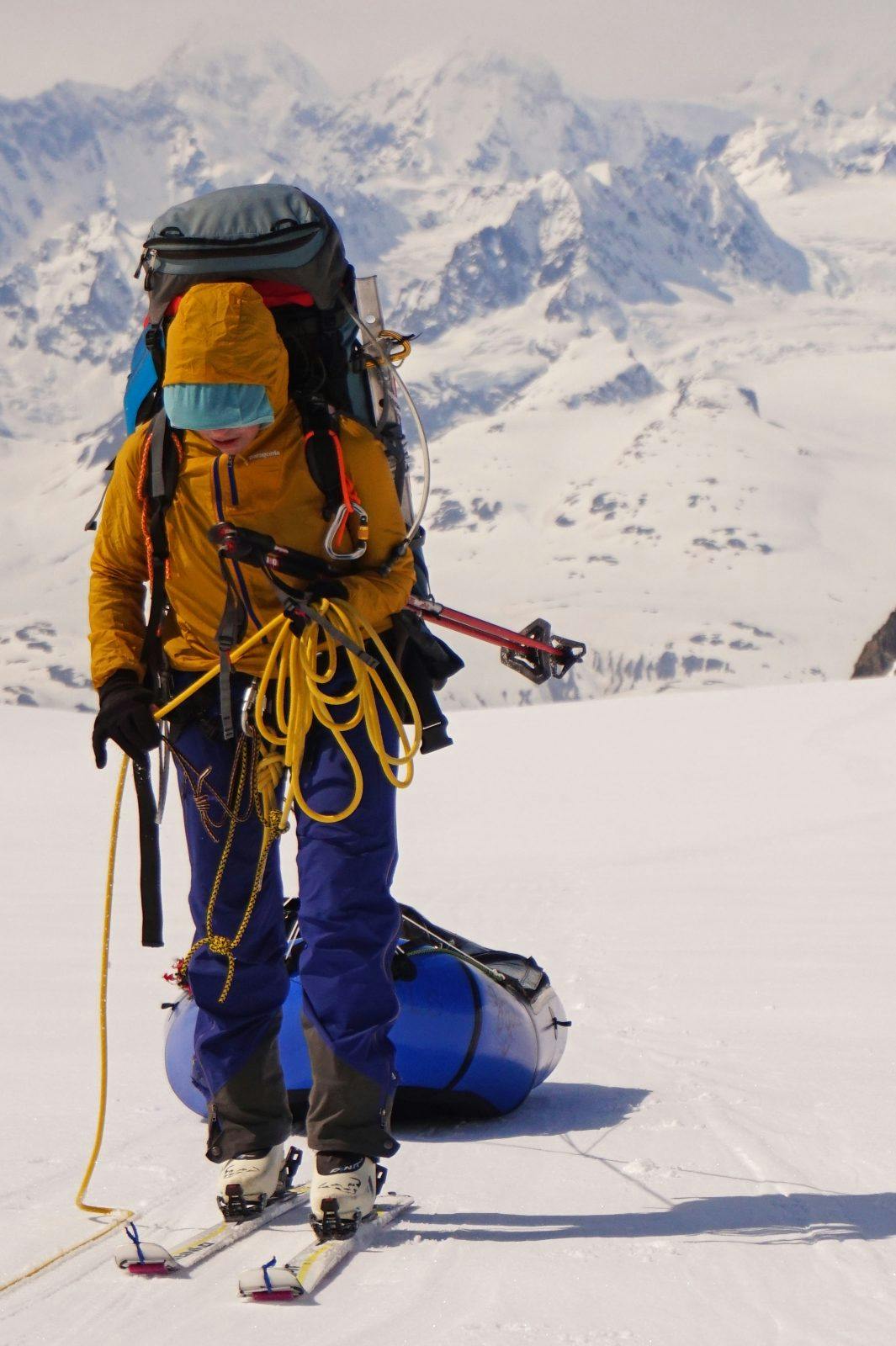

It was the first time we’d loaded packrafts with so much equipment and we were feeling slightly apprehensive about attaching awkward items like skis, crampons and ice axes. The low level fast-flowing glacial water hid boulders lurking just below the surface. As we floated, a black bear got spooked and ran off from the river bank. Steep snow-capped mountains gave way to rock walls and then thick forest blanketed both sides of the river. Floating our way down the braided Chilkat River, bald eagles flew overhead and perched on driftwood as we passed. We rounded a corner and saw the main highway, where the sound of glacier-fed rapids and paddle strokes would soon dissolve into the sound of cars speeding along asphalt.
I’d like to say a big thank you to NOLS and the American Alpine Club for helping us bring this trip to life!
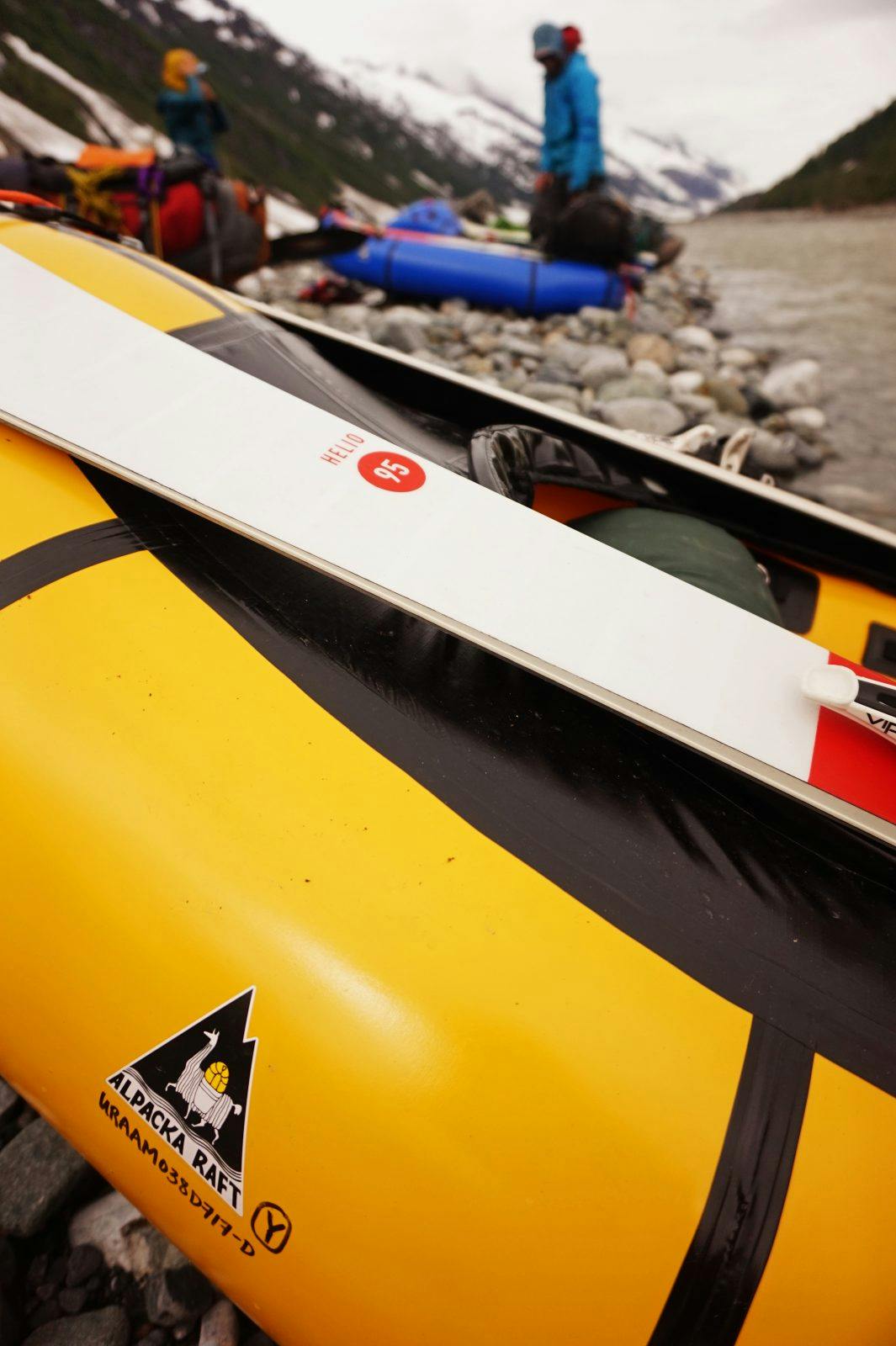
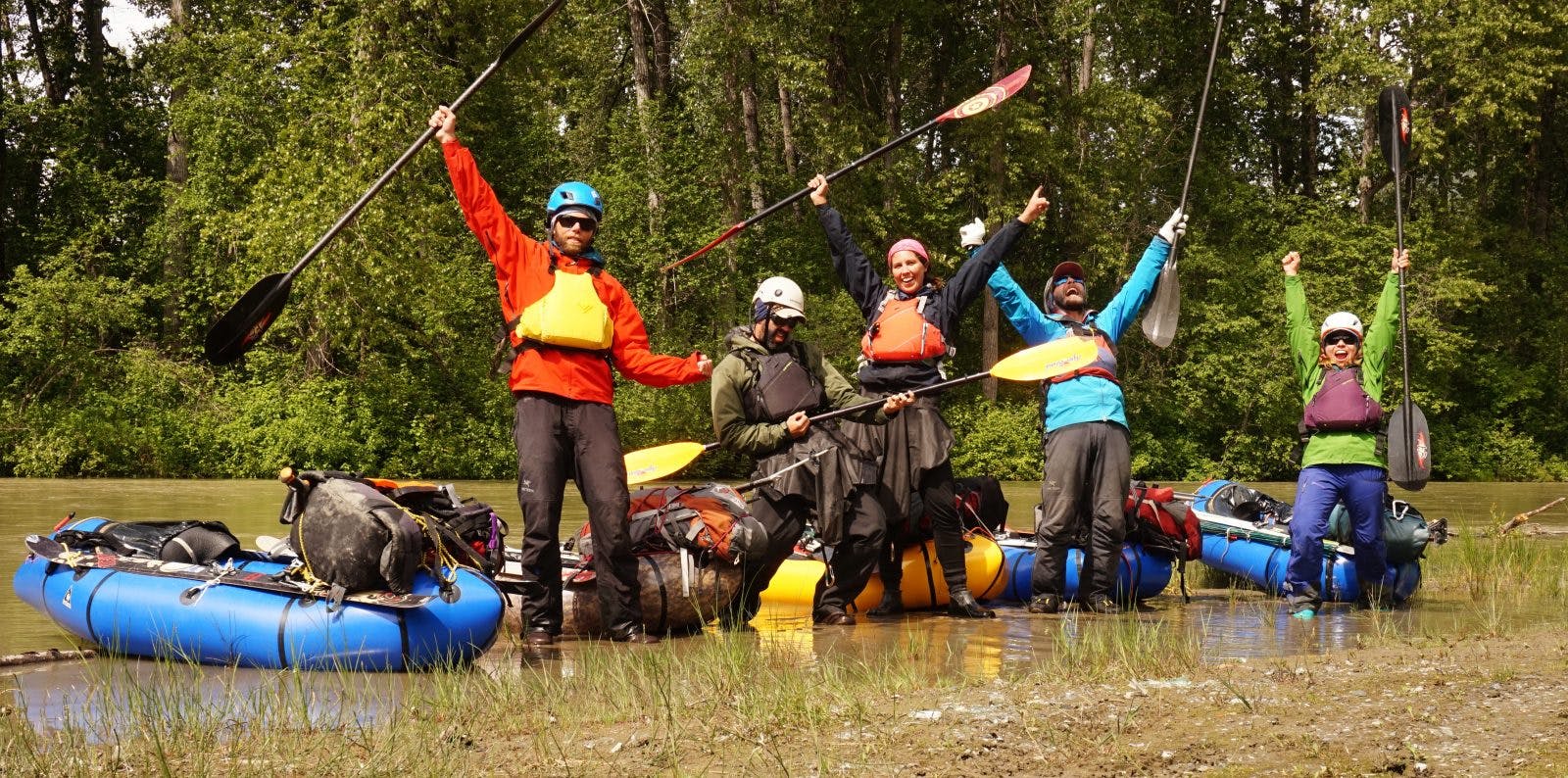
Find out more about this trip!
Just in case you missed it, Dulkara and Alice had a Facebook Live event, discussing this adventure and a few others. Get the details and watch the discussion at the Facebook link.
